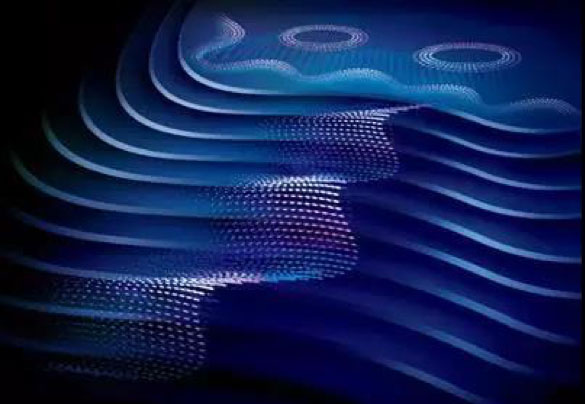

A research team led by Prof. QIAO Zhenhua from University of Science and Technology of China of the Chinese Academy of Sciences and Assoc. Prof. ZHANG Liyuan from Southern University of Science and Technology has for the first time experimentally observed the three-dimensional (3D) quantum Hall effect in bulk ZrTe5 crystal. This study was published in Nature.
Normally, electrons travel in straight line-it means that the current usually flows following the direction of voltage drop. When a magnetic field is applied in a direction perpendicular to the current, a transverse force will be exerted on the charge carriers, leading to the production of a transverse potential difference. This phenomenon is the famous Hall effect.
In 1980 a quantum-mechanical version of the Hall effect was discovered by German physicist Klaus von Klitzing. In 1987, Bertrand Halperin from Harvard University proposed signatures for such a 3D quantum Hall effect. A straightforward strategy for the realization of quantum Hall effect in 3D system is to stack 2D topological materials layer by layer. At the boundary of each layer, electrons can move forward like an unimpeded boat in water. Nonetheless, the existence of energy gap between every boundary hinders the movement of electrons from one layer to another. In this case, such systems are still of 2D nature.
Zirconium telluride (ZrTe5) is a new type of 3D layered material with unique thermoelectric properties and anomalous resistance dependence on temperature. Since 2014, Prof. ZHANG’s team has been studying the topological properties of ZrTe5, and found that ZrTe5 is an ideal platform to study 3D quantum Hall effect. In 2017, Prof. QIAO’s team began to work closely with ZHANG’s team. They made the observation of 3D quantum Hall effect on bulk materials into reality.
In this study, researchers discovered that the carrier density wave induced by electron-electron interaction is the key factor for the appearance of 3D quantum Hall effect. Electrons in such a system can travel freely between different energy bands, like boats traveling in vast ocean.
“This discovery just gave us a new material system with underlying topological order,” said WEN Xiaogang, a member of the National Academy of Sciences.
Since the discovery of quantum Hall effect in 1980, related studies have put great focus on 2D materials, leading to a growing presence of Hall effect family. The successful observation of 3D quantum Hall effect is like finding a piece of jigsaw puzzle. Prof. QIAO believes that more scholars will be attracted to join the exploration of novel 3D quantum states and phase change, thus bringing about new insights in the development of Hall effect family.
140 years ago, Edwin Hall, who discovered Hall effect, could not answer what classic Hall effect can do. But take a look at today-the classic Hall effect has been integrated into our daily lives. It has been widely used in automobiles, home appliances, mobile phones and other industries. So what 3D quantum Hall effect can do in the future? Let us wait and see.

An electron can only move freely on the boundary of one 2D layer, just like a restricted boat can only travel in a same river. (Image by CUI Jie)


86-10-68597521 (day)
86-10-68597289 (night)

86-10-68511095 (day)
86-10-68512458 (night)

cas_en@cas.cn

52 Sanlihe Rd., Xicheng District,
Beijing, China (100864)

